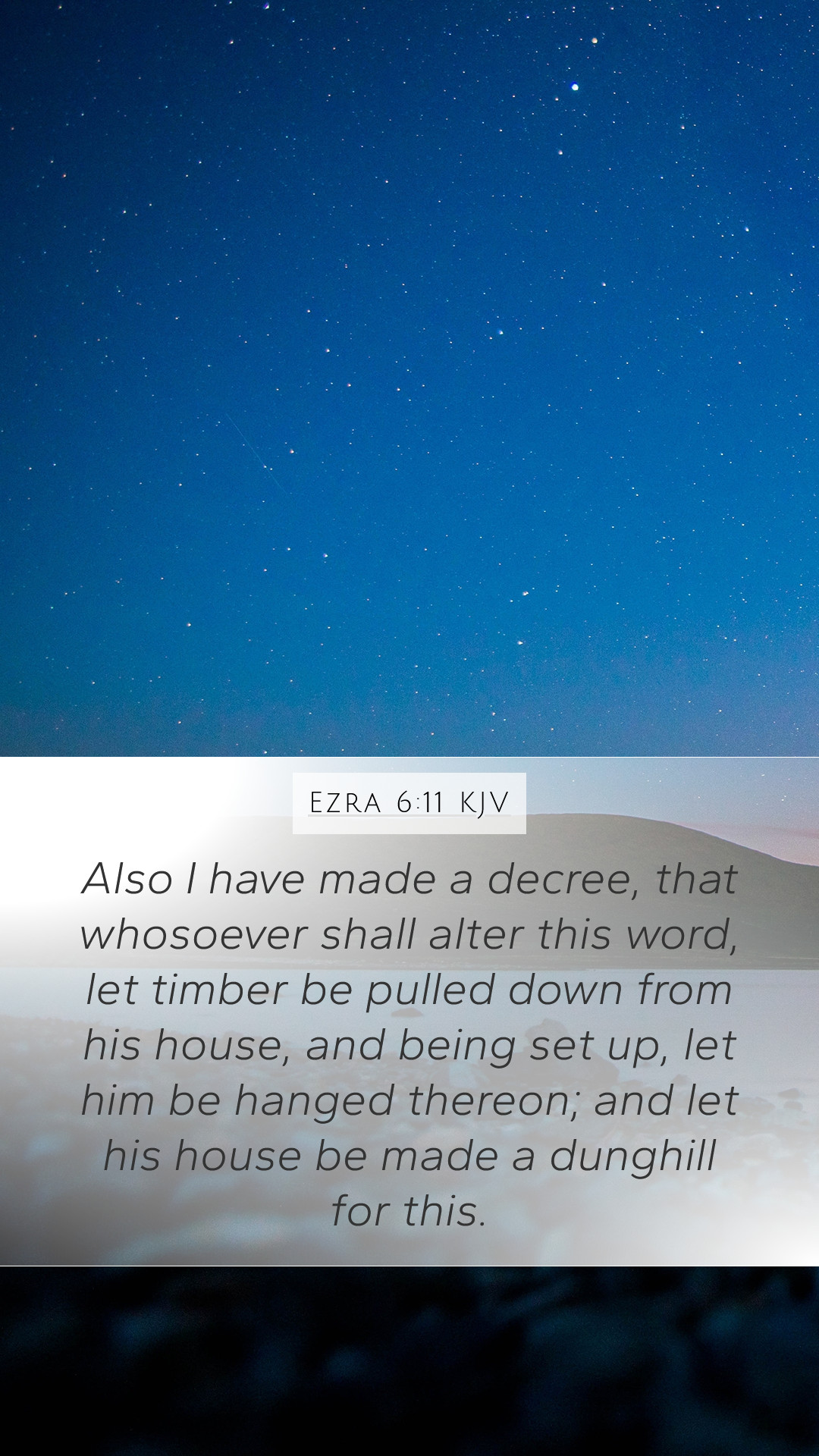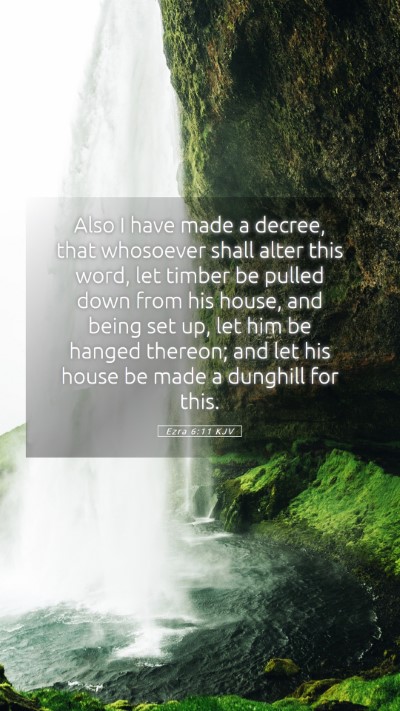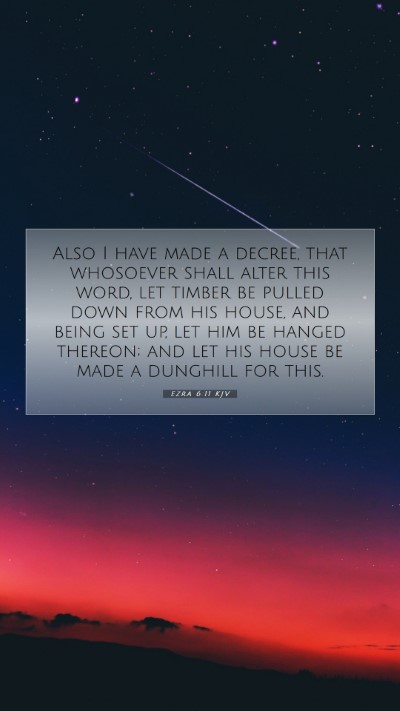Old Testament
Genesis Exodus Leviticus Numbers Deuteronomy Joshua Judges Ruth 1 Samuel 2 Samuel 1 Kings 2 Kings 1 Chronicles 2 Chronicles Ezra Nehemiah Esther Job Psalms Proverbs Ecclesiastes Song of Solomon Isaiah Jeremiah Lamentations Ezekiel Daniel Hosea Joel Amos Obadiah Jonah Micah Nahum Habakkuk Zephaniah Haggai Zechariah MalachiEzra 6:11 Meaning
What is the meaning of Ezra 6:11?
Also I have made a decree, that whosoever shall alter this word, let timber be pulled down from his house, and being set up, let him be hanged thereon; and let his house be made a dunghill for this.
Ezra 6:11 Bible Verse Meaning
Bible Verse Meaning of Ezra 6:11
Understanding the significance of Ezra 6:11 requires a careful examination through bible verse meanings, bible commentary, and scripture analysis. This verse depicts the authority and expectations set by King Darius regarding the construction of the temple. Below is a summary drawn from historical biblical commentaries.
Verse Context
Ezra 6:11 states:
"Also I have made a decree that whosoever shall alter this word, let timber be pulled down from his house, and being set up, let him be hanged thereon; and let his house be made a dunghill for this."
This passage speaks about the serious consequences of not complying with the decree concerning the rebuilding of the temple in Jerusalem.
Summary of Insights
-
Authority of the King: The verse underscores King Darius's firm stance in supporting the rebuilding of the temple. According to Matthew Henry's Commentary, Darius's decree reflects God's providence in ensuring the temple's restoration was not only permitted but also enforced (Henry, Commentary on the Whole Bible).
-
Seriousness of the Decree: Adam Clarke observes that the consequences outlined (hanging and destruction of one’s property) indicate the severity with which the king viewed alterations to the decree. Clarke emphasizes the importance of respecting the will of the king as representative of divine order.
-
Symbolism of the Timber: Albert Barnes discusses how the timber represents both a physical and spiritual structure. The timber's destruction for defiance symbolizes the spiritual ramifications of disobedience against God's commands as enacted through secular authority (Barnes, Notes on the Old Testament).
-
Historical Context: This decree reflects the political climate of the time, wherein the return of the Jews and the rebuilding of their temple faced opposition. Understanding this can enhance our bible study insights into the perseverance shown by the Jewish people in fulfilling God's promises.
-
Application to Life: In today's context, this verse serves as a reminder of the importance of respecting both divine authority and the structures established by earthly leaders, which can lead into discussions on how to apply these lessons to personal and communal life.
Related Scriptures
- Ezra 5:11-14: This passage details the history of the decree and the Jewish leaders' response at that time.
- Ezra 7:23: Further illustrates how the decree of King Artaxerxes continues to support the temple's needs and maintenance.
- Isaiah 44:28: References the prophetic endorsement of Cyrus and the rebuilding of Jerusalem, enriching the narrative of restoration.
Conclusion
In examining Ezra 6:11, it's clear that the passage reflects themes of obedience, authority, and divine guidance in the physical and spiritual restoration of a covenant community. Biblical exegesis of this verse illustrates a profound understanding of how God's purposes often work through geopolitical affairs, and this can serve as a robust theme for bible study groups and bible study resources.
Further Study
For deeper understanding and application of scripture, consider engaging with bible study guides that focus on historical context, character analysis of figures like King Darius, or the implications of authority in a spiritual context. Additionally, exploring how to interpret Bible verses effectively can enhance personal study and group discussions.


